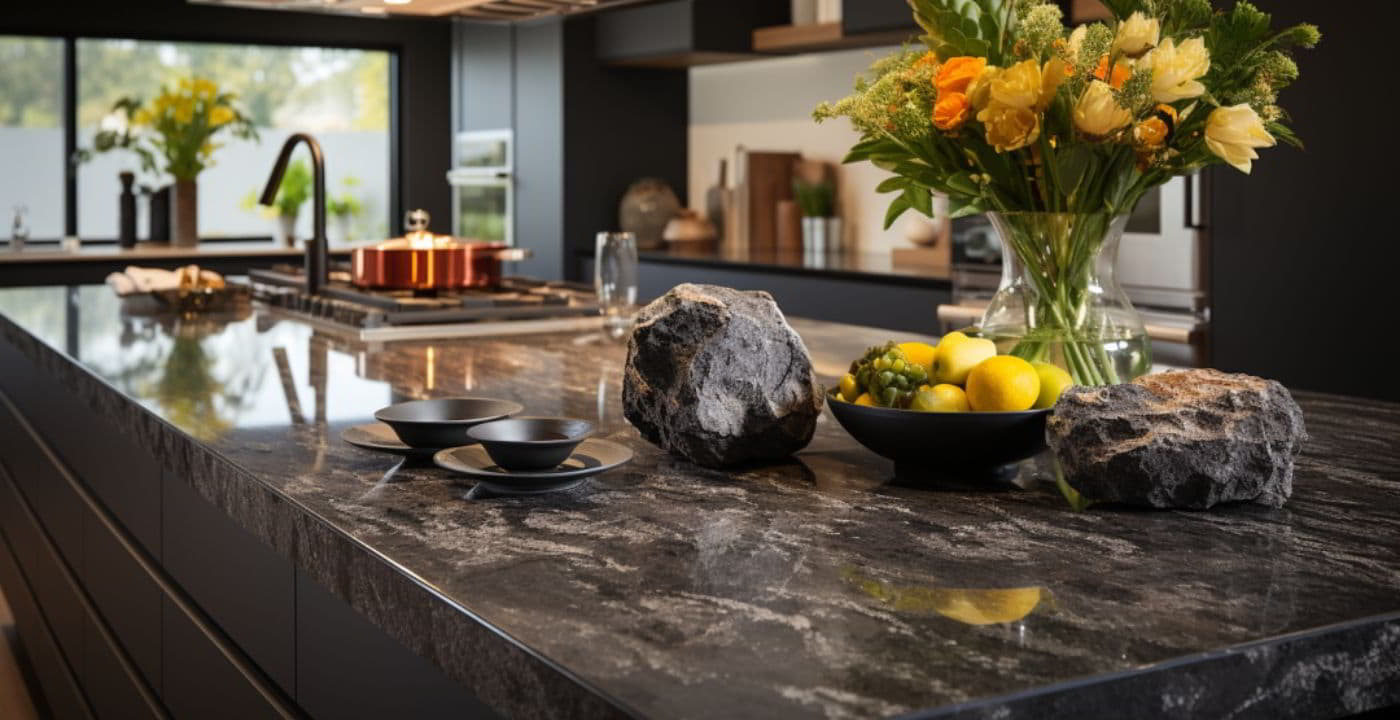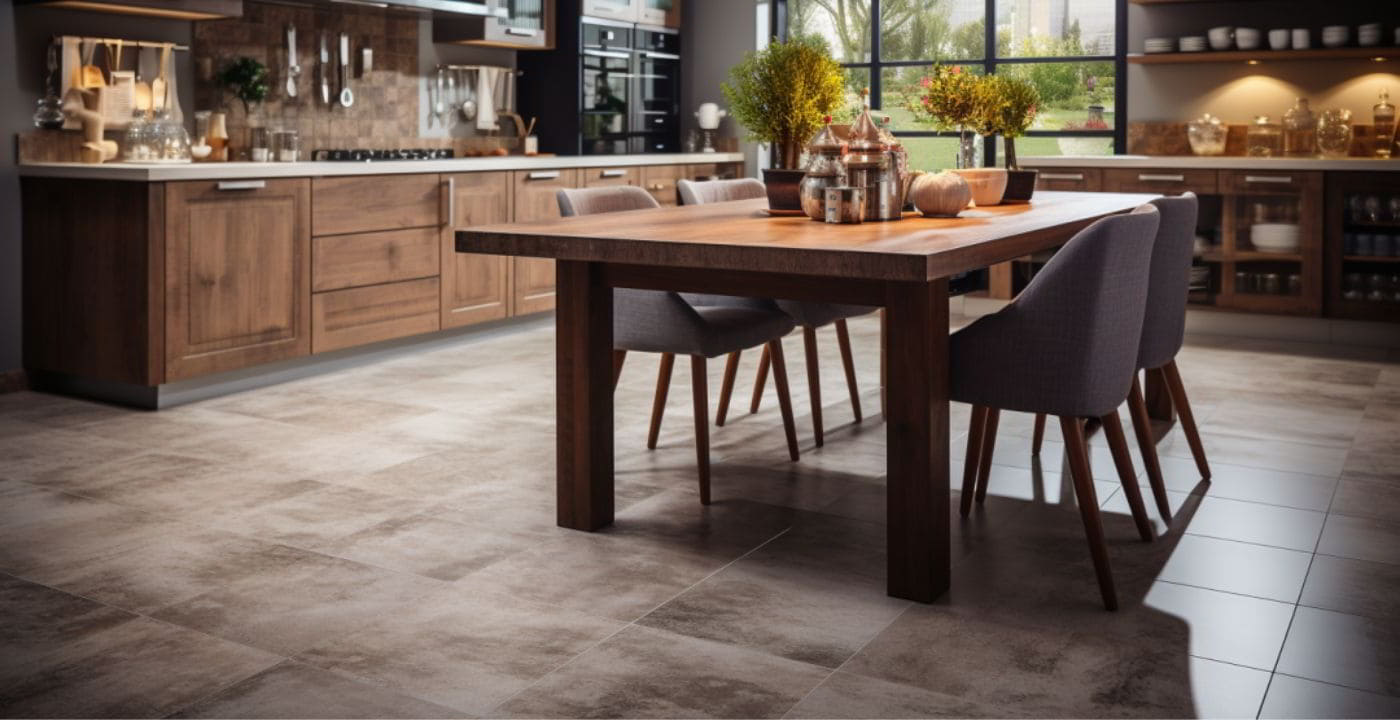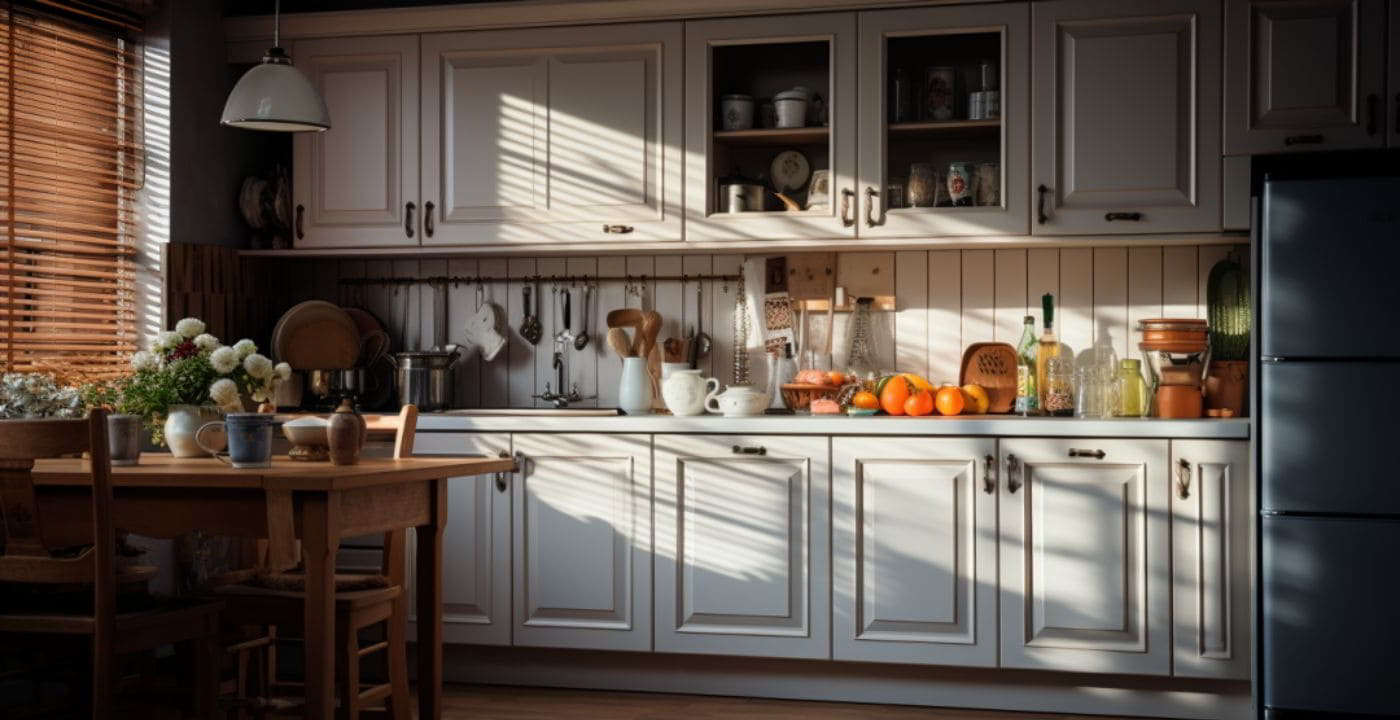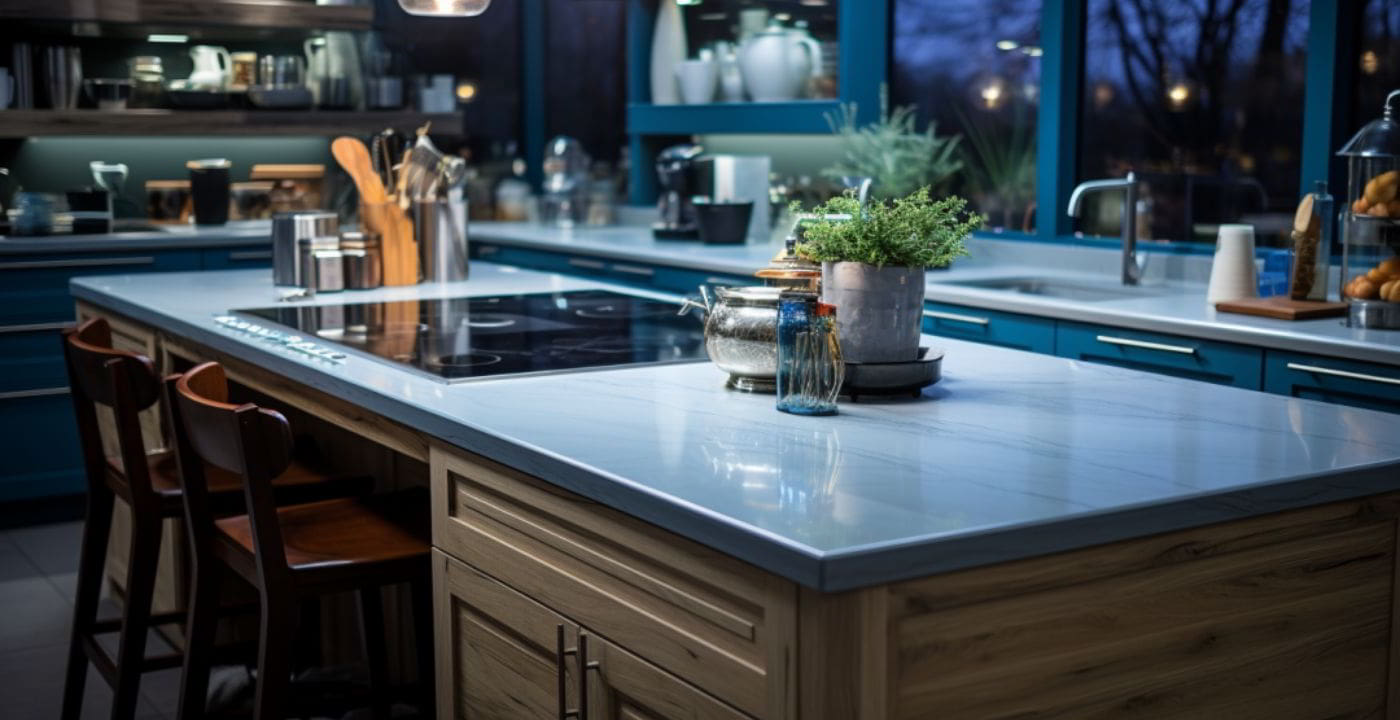Stuck between marble’s elegant veining and granite’s rugged charm?
The marble vs granite debate stops here. Both stones promise luxury, but their differences matter more than meets the eye.
Price tags swing, maintenance needs vary, and durability differences define decades of use.
Whether you’re dreaming of marathon baking sessions or hosting sophisticated dinner parties, we’ll match you with the perfect stone for your kitchen’s demands.
Key Notes
- Granite offers superior durability and heat resistance, making it ideal for busy, high-traffic kitchens.
- Marble requires sealing every few months, whilst granite needs just annual maintenance.
- Premium marble starts at £70/sq ft, whilst granite begins at £50/sq ft for basic varieties.
- Light-coloured granite makes spaces appear larger and better hides everyday wear and tear.
Marble vs. Granite: At A Glance
To kick things off, here’s a quick comparison of the two materials:
| Feature | Marble | Granite |
|---|---|---|
| Price | Higher, especially for premium types | Generally lower than marble |
| Durability | Softer, more prone to scratches | Scratch and heat-resistant |
| Appearance | Unique veining and luxurious look | Wide colour variety with natural patterns |
| Appearance | Unique veining and luxurious look | Wide colour variety with natural patterns |
| Maintenance | Higher, needs regular care and polishing | Low, needs occasional sealing |
| Heat Resistance | Moderate, can discolour without proper care | Excellent, handles hot pans with ease |
Marble: Unique and Smooth
Marble, with its smooth surface and beautiful veining, has been a staple in high-end kitchens for decades.
It’s a softer, metamorphic rock, primarily made of calcite, which gives it a unique look that’s hard to replicate. But marble isn’t without its challenges.
- Appearance: Marble’s aesthetic is unmatched. The veining varies with each slab, giving it an elegant and timeless appeal. This makes it a go-to choice for those who want their kitchen to stand out.
- Cool Surface: Marble has a naturally cool feel, which bakers love. It’s ideal for rolling out dough and other baking tasks.
- Maintenance: Marble is more porous than granite, so it needs extra care. Regular sealing and prompt cleaning of spills keep it in top condition.
Pros of Marble
- Luxurious appearance with unique veining.
- Ideal for baking with a naturally cool surface.
- Each slab is one-of-a-kind, for a custom kitchen.
Cons of Marble
- Scratches and stains easily if not maintained.
- Higher maintenance than granite.
- Costs can be higher, especially for premium varieties like Calacatta or Carrara.
Marble Pricing
Marble tends to start around £70 per square foot, with premium options reaching up to £250 or more.
While it’s generally pricier than granite, the unique look often justifies the investment for those who prioritise aesthetics.
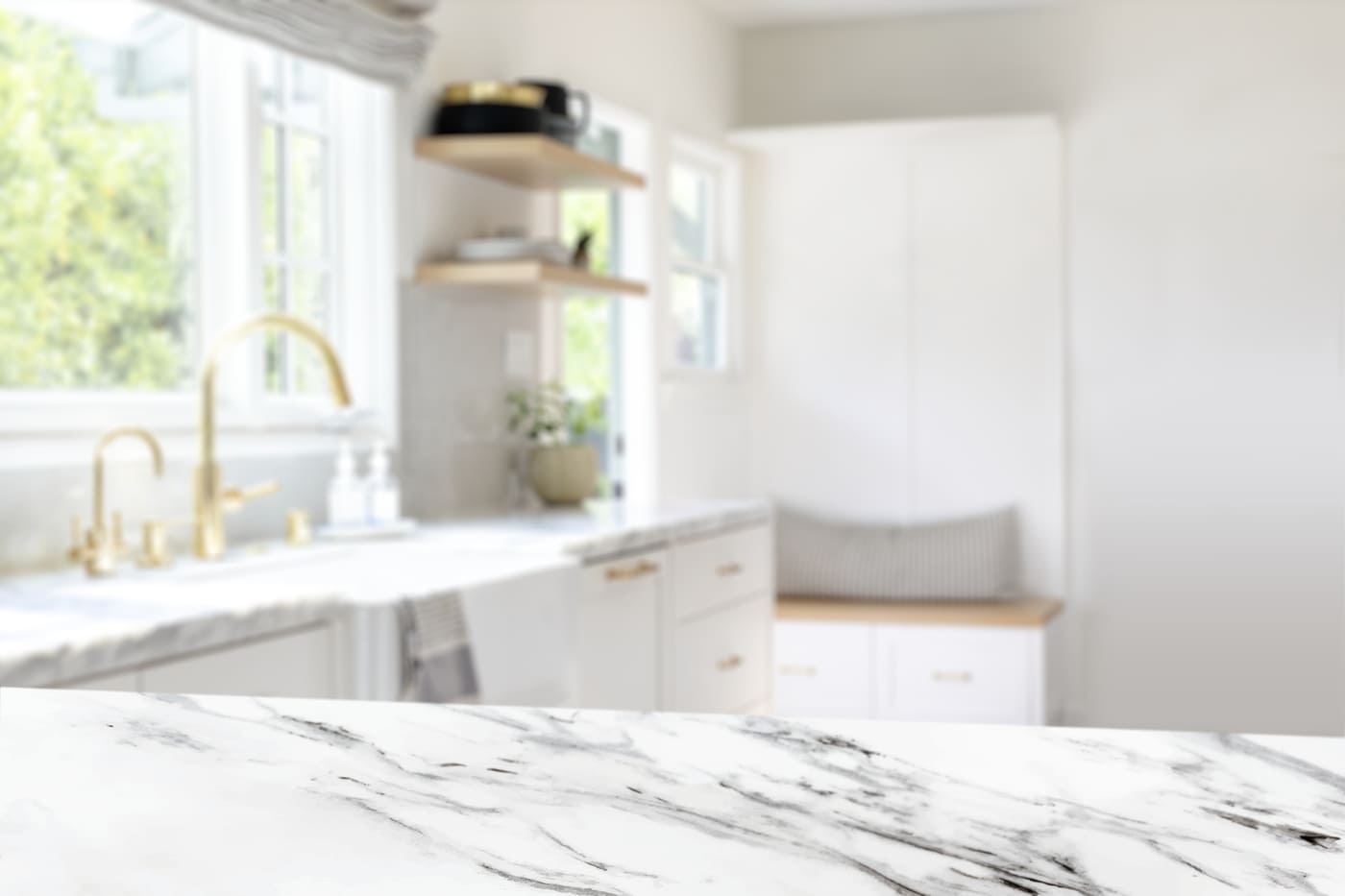
Granite: Hardy Volcanic Rock
Granite is a volcanic rock made from minerals like quartz, mica, and feldspar.
This gives it its characteristic speckled look and a broad colour palette, from deep blacks to earthy browns and bright whites. It’s a hard, durable stone that thrives in busy kitchens.
- Heat Resistance: Yes, you can put hot pans on granite without worry. It withstands heat without discolouring or cracking, making it a favourite for enthusiastic cooks.
- Scratch Resistance: Granite holds up well against everyday kitchen wear. It’s tough and doesn’t easily scratch, even with regular knife use.
- Maintenance: Granite is simple to maintain but needs sealing about once a year to keep it stain-resistant. You’ll know it’s time for re-sealing when water no longer beads on the surface.
Pros of Granite
- Excellent durability for active kitchens.
- Handles high temperatures—perfect for placing hot pots and pans.
- Variety of colours and patterns to match any kitchen style.
- Easy maintenance and minimal sealing.
Cons of Granite
- Heavier than other materials, which means you’ll need sturdy cabinetry to support it.
- Natural pattern variations can make matching slabs tricky.
ℹ️ Pro Tip: Light-colored granite makes your kitchen feel brighter and more spacious. It also shows fewer scratches and marks compared to darker shades.
Granite Pricing
Granite usually starts around £50 per square foot for basic slabs, with more exotic varieties reaching up to £200 or more.
It’s generally more budget-friendly than high-end marble options, making it an accessible choice for most homeowners.
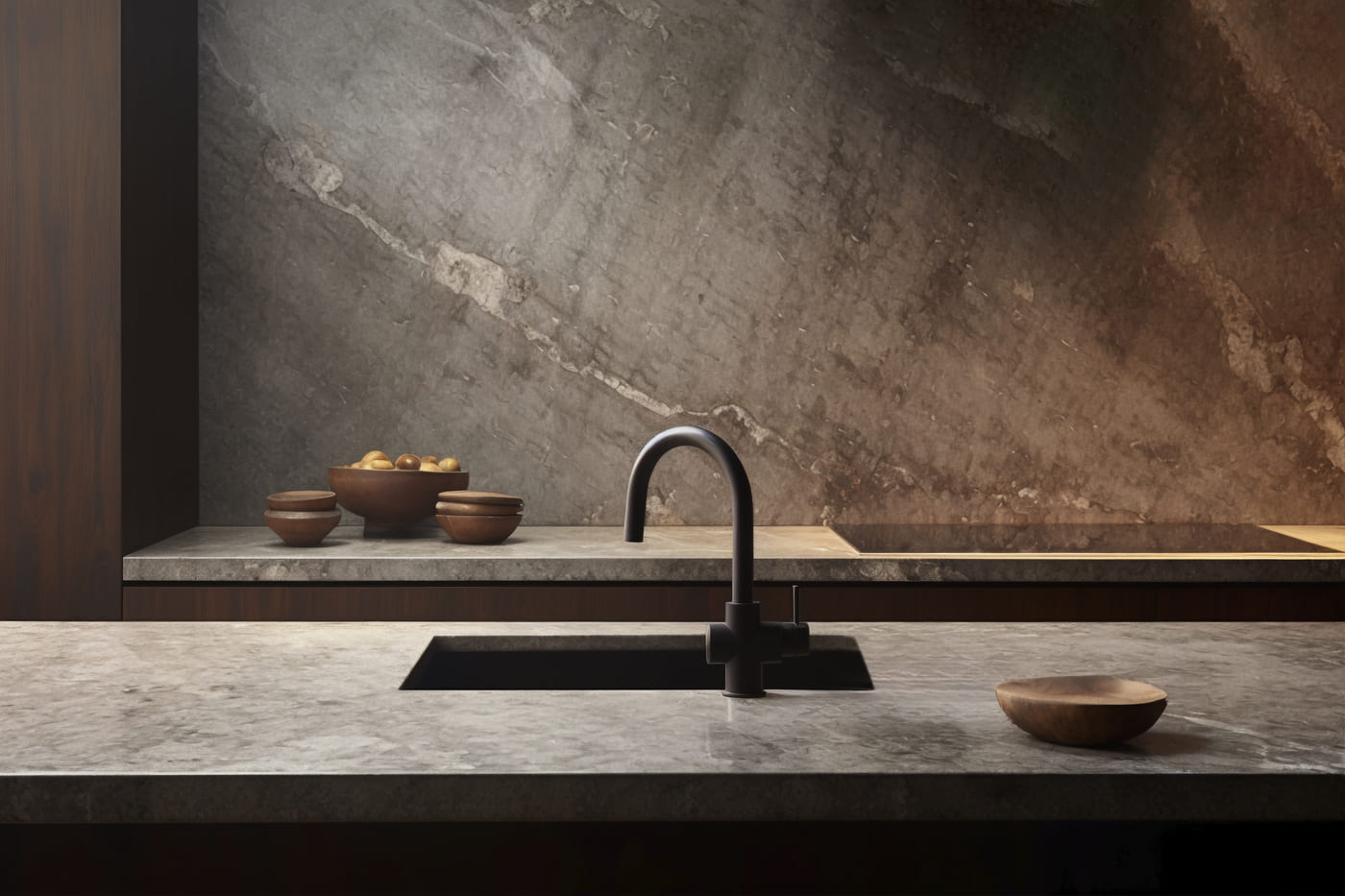
Marble vs Granite: Pros and Cons Breakdown
When it comes to marble vs granite kitchen considerations, both materials have distinct advantages and drawbacks.
Here’s a detailed look at how they compare:
| Category | Marble | Granite |
|---|---|---|
| Durability | Softer, prone to scratches and etching | Tough and resilient, scratch-resistant |
| Heat Resistance | Moderate, risks discolouration with heat | High, safe for hot pans |
| Maintenance | High, frequent sealing and care required | Low, periodic sealing needed |
| Cost | Higher, especially for premium marble | Generally affordable |
| Appearance | Unique veining, classic and elegant | Wide variety, earthy tones |
Feature-by-Feature Comparison
Durability
Granite wins here. It’s one of the hardest natural stones, ideal for kitchens that get a lot of action. Marble, while stunning, can be fragile without proper care.
Appearance
Marble takes the crown for its refined and classic look. The veining in each slab is unique, offering a luxurious feel that’s hard to beat.
Granite, on the other hand, offers a broader range of colours and patterns, perfect for those seeking variety.
Maintenance
Granite needs less upkeep. An annual sealing usually does the trick. Marble demands more love—sealing every few months and cleaning up spills immediately to avoid staining.
Cost
Granite tends to be easier on the wallet. While high-end slabs exist, it’s generally more affordable.
Marble, particularly rare types, can stretch the budget, but its luxury might make it worth the splurge.
Heat Resistance
Granite is the go-to if you regularly set hot pots down without a trivet. Marble’s heat resistance is moderate, so it’s best to play it safe with extra protection.
What Lasts Longer: Marble or Granite?
As a rule of thumb, granite outlasts marble. It’s dense, hardy, and less prone to scratching.
Marble’s softer surface can show wear over time, especially in high-traffic kitchens. With the right care, marble can last decades, but granite needs less attention to keep looking great.
Frequently Asked Questions
Is granite the same as marble?
No, granite isn’t the same as marble. Granite is a hard igneous rock from cooled magma. Marble is a softer metamorphic rock that started as limestone. This makes granite more durable, while marble requires more care.
Which is more costly, marble or granite?
Marble usually costs more, especially for rare types. Granite is often cheaper for common colours, but both have pricey options based on the slab and installation.
Can you put hot pans on granite?
Yes, granite handles heat well and won’t scorch or crack. Marble is less heat-resistant, so it’s better to use trivets.
Conclusion
The marble vs granite choice boils down to your kitchen’s rhythm.
Granite takes the crown for durability – hot pans, spills, and daily chaos won’t faze it. Marble brings timeless elegance and a baker’s best friend in its cool surface, but demands more TLC. Both stones transform ordinary kitchens into stunning spaces, each with its own personality and perks.
Skip the guesswork and endless research. We bring decades of kitchen expertise to your doorstep. We’ll analyze your style, maintenance preferences, and budget to pinpoint your perfect worktop match. Plus, we’ll handle everything from selection to installation.
Ready to upgrade your kitchen? Get your kitchen digitally designed today.

